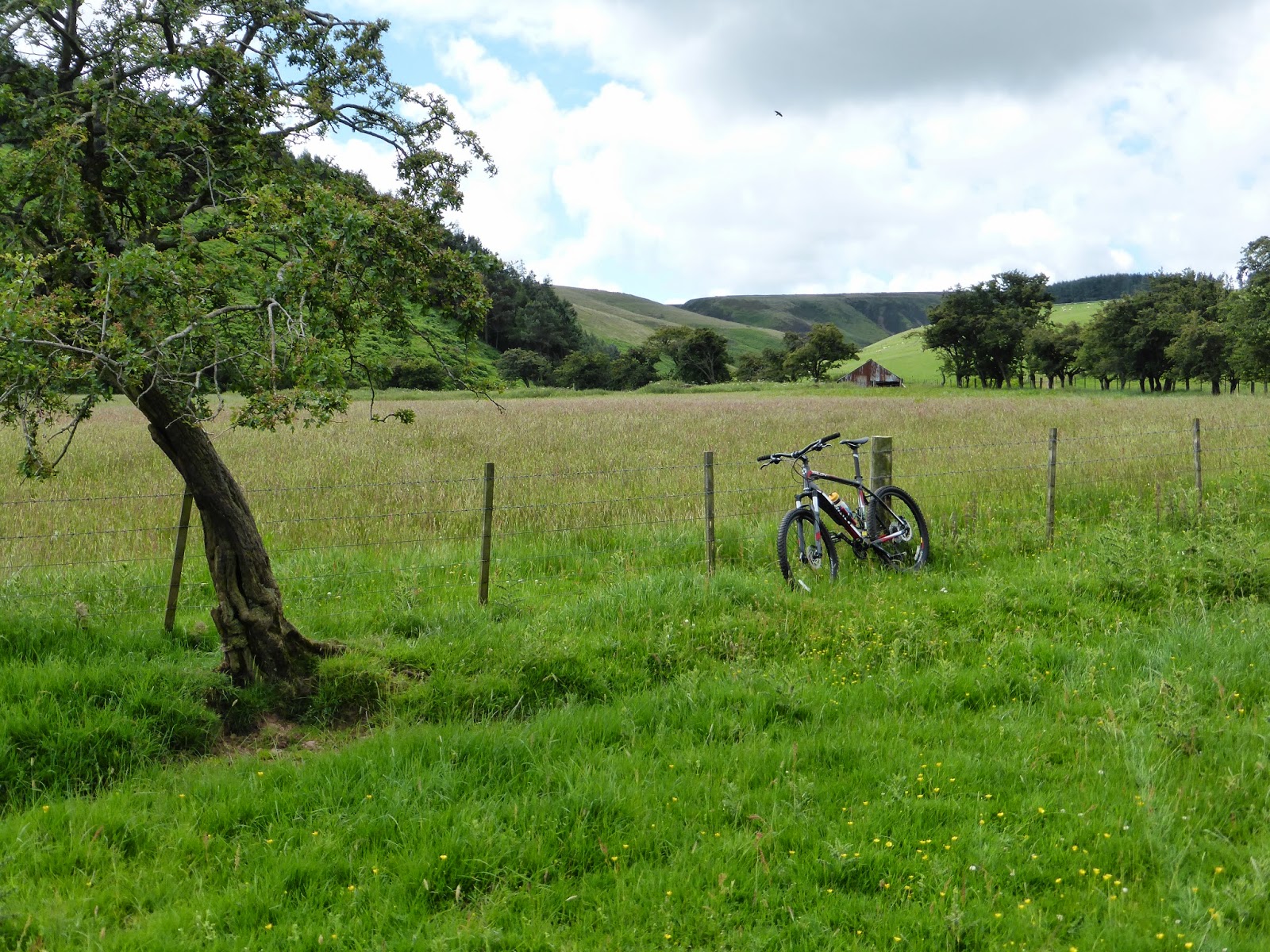Cycling past Thurston Mains & through Aikengall land where there are foxglove flowers everywhere poking through the lush bracken & even some thistles with their purple hats on display.
Now observe...The cows & sheep are quite happy eating the grass until they spot me, the sheep don't even lift their heads, but...
...my nemesis 'the coo's' make a bee line for me goading me from the other side of the fence...
...& when I cycle away they start running after me.
This is a nice wee farm track which I like to use from time to time linking up the farms of Aikengall & Stottencleugh.
Not been much rain of late so some parts of the Oldhamstocks burn have dried up.
With no cattle in this field to keep the grass down, it has transformed into a beautiful summer meadow with lots of wild flowers & lots of bee's buzzing around.
The locals have all had their fleece's shaved which must be more comfortable in this heat.
Following the single track road & up a little hill I arrive at the quaint little hamlet / village of Oldhamstocks.
Some tasty residents roaming free.
Lammermuir Pipe Organs is the only workshop north of the border in Scotland that constructs & builds mechanical action organs.
Oldhamstocks kirk, mercat cross & well head.
Parts of the kirk possibly dates as far back as the 1100's.
The mercat cross originally around 4.6 metres high with a cruciform top. At some stage the cross fell into disrepair but some of it's pieces were saved & kept within the walled garden of the manse. When the cross was re-built & moved to it's present site, a carved stone ball recovered from an early manse building was added. So all that remains from the earliest structure is part of the narrow shaft & it's moulded neck. Historic Scotland suggests that the mercat cross may date back to the 1700's.
The wellhead was erected in the village green as a public water supply in the 1700's fed by springs.
Painting of the 'Oldhamstocks Fair' by Alexander Carse 1796.
Fairs & Markets had traditionally been an important part of the rural economy serving multiple functions such as the sale of food, clothing & livestock markets & also as a hiring ground for farm servants.
Leaving Oldhamstocks it was off in the direction of Cockburnspath then through a section of Dunglass estate towards my favourite beach at Dunglass.
Lepidodendron root fossils, root & trunk imprints on the rocks down here in abundance there are hundreds of them & every time I come down here I always discover new ones where the cliff face has crumbled & eroded.
Lepidodendron trees thrived during the carboniferous period around 359-299 million years ago.
As you can see with the above two pictures the hard sandstone rocks sit upon soft crumbly type rock which when wet just turns to a slimy mud & eventually just gives way.
Another interesting part of this beach is this huge gigantic slab of fossilised coral which has snapped away from the other bit higher up on the cliff & now just balances on the rocks below.
So within a few yards there is evidence of firstly a forest & a few feet higher up the cliff evidence of a shallow sea.
I could spend hours down here looking at all the rocks with their strange formations, I just wish I stuck in at school I would love to of been a geologist !
So with the rapidly advancing tide I had to change my plans of sticking to the shoreline where parts of the beach are hard sand making it easy for regular mountain bikes to cycle on & head a different way back as I spent far too long scrambling around the rocks.
So it was up & away from the coast passing by Bilsdean, Birnieknowes & Branxton then home to Innerwick enjoying the views & smells of summer along the way.
Hope you enjoyed the ride thanks for visiting cheers for now.






























































No comments:
Post a Comment